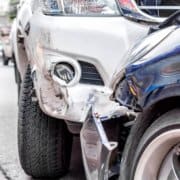Driving safety: an accident is likely to occur 23 more times with cell phone use
Thompsons encourages all drivers not use hand-held communication devices of any kind while driving. Even if using hands-free and voice-activated dialing, it could still be a deadly distraction.
- Texting and driving makes an accident 23 times more likely.
- Dialing your phone increase your chances of an accident by 2.8 times.
- 1 in 5 drivers confess to surfing the web while driving.
- Smartphones are the most common form of distraction for drivers.
- Making even the most basic text takes a minimum of 5 seconds of your attention off of the road when you text and drive.
- In addition to causing 330,000 injuries each year, it’s estimated that about 11 teens die every day as a result of texting and driving. And this is just teens – this is about 4000 total deaths per year in the United States
- Texting is more dangerous than drunk driving – texting while driving is 6 times more likely to cause an accident than driving drunk.
Are there any exemptions to Ontario’s distracted driving law?
- Calling 9-1-1 in an emergency situation
- When the driver is lawfully parked or has safely pulled off the roadway and is not impeding traffic.
Note: It is dangerous to stop on the shoulder of a 400-series highway and drivers are prohibited from pulling off a designated 400-series highway and parking for a reason other than an emergency. If the situation is not an emergency, drivers are advised to exit the freeway at an interchange or pull into the nearest service centre.
Fines (Starting January 1, 2019)
For your first conviction:
- a fine of up to $1,000
- three demerit points
- a three-day day driver’s licence suspension
For your second conviction within 5 years:
- a fine of up to $2,000
- six demerit points
- a seven-day driver’s licence suspension
For your third and all subsequent convictions within 5 years:
- a fine of up to $3,000
- six demerit points
- a 30-day driver’s licence suspension
No text, email or phone call is worth your life, the life of a loved one or the life of another motorist or pedestrian!
Work safe. Farm safe. Home safe.™
™ is a registered trademark of Thompsons Limited.


 Thompsons Limited/Shutterstock
Thompsons Limited/Shutterstock